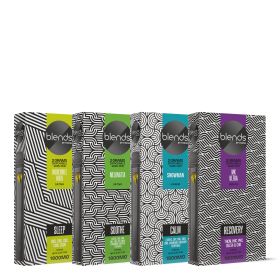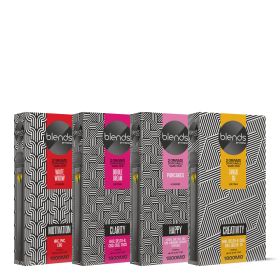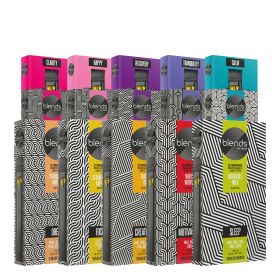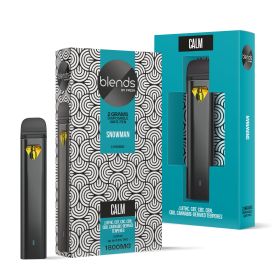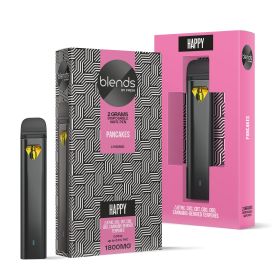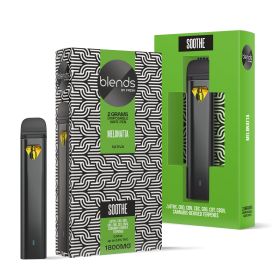CBT Products
Customer Reviews
Common Questions
A Brief Overview of CBT Products
As the market for cannabinoids grows, more compounds are appearing every day. While some cannabinoids are new, others have been around for decades but haven't had their moment in the spotlight. CBT products are one example.
CBT has been around since the 1960s and offers a wide range of benefits. Though little is known about its properties, its effects seem positive, especially when combined with other cannabinoids. Learn more down below!
What is CBT?
CBT, or cannabitriol, was first isolated by scientists in the late 1960s and early 1970s, and it was found to be more common in hemp plants than marijuana plants. Despite being discovered in 1966, the chemical structure of the compound wasn't determined until a decade later, in 1976. According to Cannabis Tech, scientists have found nine slightly different types of CBT, all of which are derived from CBDA. Despite their similarities, each of these nine types of CBT has a slightly different molecular structure.
In hemp, CBT is more prevalent than in marijuana, but it isn't always present in cannabis, and when it is, it is only found in tiny concentrations, so it has been hard to extract and study it.
Even though there haven't been any studies on CBT's benefits or effects, the compound has appeared in some studies related to other compounds. For example, a study conducted in 2007 on THC's addictive effects was looking for compounds that could reduce the compound's psychoactive effects. According to their findings, CBT is "the major degradation product of this reaction, which demonstrates that an antibody can catalyze a complex chemical transformation with therapeutic implications for treating marijuana abuse."
However, no other studies have confirmed that CBT mitigates the negative effects of THC on the body. If these findings are true, however, it may mean that CBT is likely a non-psychoactive cannabinoid that, when combined with THC, can reduce its psychoactive effects.
CBT, like many other cannabinoids, may be useful to treat glaucoma, according to another study conducted in 1983, which showed that it can potentially reduce intraocular eye pressure. In addition, some anecdotal evidence suggests that CBT can enhance CBD's pain relief effects, but more research is needed in that area.
Despite the fact that there is little scientific research on CBT, many scientists support the entourage effect, or the concept that cannabis compounds, like cannabinoids, terpenes, and flavonoids, enhance existing properties and produce more optimal effects when combined.
Considering that there isn't much research on the cannabinoid, why should CBT be used at all?
CBT-C has received significant attention due to its presence outside of cannabis, making it one of the few cannabinoids that exist naturally in other plants. As a result, CBT-C can be isolated from a type of rhododendron used in Traditional Chinese Medicine that is still widely practiced today. Therefore, CBT might have potential medical applications, whether it is derived from cannabis or from other medicinal plants.
Additionally, CBT is known as a natural agent that prevents crystallization, which is great news for people using CBT via disposable vapes or carts, especially when combined with other cannabinoids. It may be possible to eliminate the need for external thinning agents in a vaping product that prevents the cart from crystallizing if CBT is present in the product.
How Potent is CBT?
There is no evidence that CBT causes psychoactive effects at the moment, and it is believed to act similarly to CBD in terms of potency. However, further research is required before any conclusive claims can be made.
How Are CBT Products Made?
CBT is a natural phytocannabinoid, so it is not inherently synthetic. However, since it occurs in such low concentrations, it is frequently isomerized from other compounds. This process may seem tricky to understand, but it's actually fairly straightforward.
CBGA, or cannabigerolic acid, is the source of all cannabinoids, also known as the "mother cannabinoid" or "mother of all cannabinoids." The molecular structure of all cannabinoids, from CBD to THC, is strikingly similar because they all come from the same source. The process by which one cannabinoid molecule's chemical structure is rearranged to produce a different molecule is called cannabinoid isomerization.
Essentially, the atoms in CBD can be shaken up and rearranged to create CBT. It begins with a preexisting substance (CBD) and ends with the properties and effects of another (CBT). This is accomplished by creating the necessary conditions for a new compound to be created by triggering a chain of chemical reactions. Even though CBT occurs naturally in cannabis and other plants, there is not enough of it to meet market demands, which led scientists to create cutting-edge technology that can create more by using hemp-derived CBD.
Are CBT Products Legal?
According to the Farm Bill, passed in 2018, hemp-derived CBT containing up to 0.3% THC is federally legal. Additionally, it is not scheduled under the Controlled Substances Act in the United States or regulated under the UN Convention on Psychotropic Substances.
However, some states have banned hemp-derived cannabinoids, so check your state's hemp legislation before attempting to purchase CBT products derived from hemp.
Is CBT Safe?
As long as you purchase CBT products from a reputable retailer, they are safe. You should find a company that aligns with your personal values regarding safety and quality since the FDA does not monitor hemp-derived cannabinoids' manufacturing or distribution. In spite of the huge number of manufacturers who create and sell hemp compounds, you can only trust a few.
At CBD Mall, we are proud to offer products made with American and pesticide-free organic hemp, and our extractions are performed by knowledgeable and qualified chemists who ensure that quality and safety are always the highest priorities. Further, our products undergo rigorous third-party lab testing to ensure the purity, potency, and quality of our cannabinoids are of the highest quality.
How CBT Products Compare to Other Cannabinoids
CBD Mall's CBT products are clearly different from most of the other compounds we offer. CBT appears to be part of the non-psychoactive group of cannabinoids, including CBD, CBN, and CBDV. A number of other compounds are psychoactive, including delta 8, delta 9, delta 10, and HHC. with delta 10 being the mildest.
In order to make matters a little clearer, we've provided a chart describing the properties of each cannabinoid.
|
Cannabinoid |
Effects |
|
Delta 8 |
|
|
Delta 9 |
|
|
Delta 10 |
|
|
CBD |
|
|
HHC |
|
|
THCV |
|
|
CBN |
|
|
CBDV |
|
Different CBT Products Available at CBD Mall
CBD Mall has a wide range of CBT-infused products. In spite of still being in its infancy, research shows that CBT has a positive safety profile similar to those of other, better researched cannabinoids, so ingesting it from a reliable supplier like us should result in virtually no long- or short-term side effects.
Our CBT products aren’t 100% CBT, as they’re part of a line of blends that let you enjoy all your favorite cannabinoids at the same time. By using a blended product, you are also able to experience the entourage effect, a phenomenon that occurs when the various cannabinoids in hemp interact with each other to enhance their effects.
Among our best-selling blended products containing CBT are:
- Snowman Vape Pen by Fresh (1800mg), which offers:
- 360mg of delta 8
- 360mg of CBT
- 360mg of CBC
- 360mg of CBN
- 360mg of CBD
- Pancakes Vape Pen by Fresh (1800mg), which offers:
- 360mg of delta 8
- 360mg of CBC
- 360mg of CBT
- 360mg of CBG
- 360mg of CBD
- Melonatta Vape Pen by Fresh (1800mg), which offers:
- 257.2 mg of delta 8
- 257.2 mg of CBD
- 257.2 mg of CBN
- 257.2 mg of CBC
- 257.1 mg of CBG
- 257.1 mg of CBT
- 257.1 mg of CBDV
Final Thoughts on CBT
The use of CBT products can prove indispensable for cannabis users. Its potential ability to counter the heavy psychoactive effects of THC as well as its promising properties that enhance CBD's pain-relieving effects make CBT a powerful addition to the body, especially when paired with other cannabinoids.
